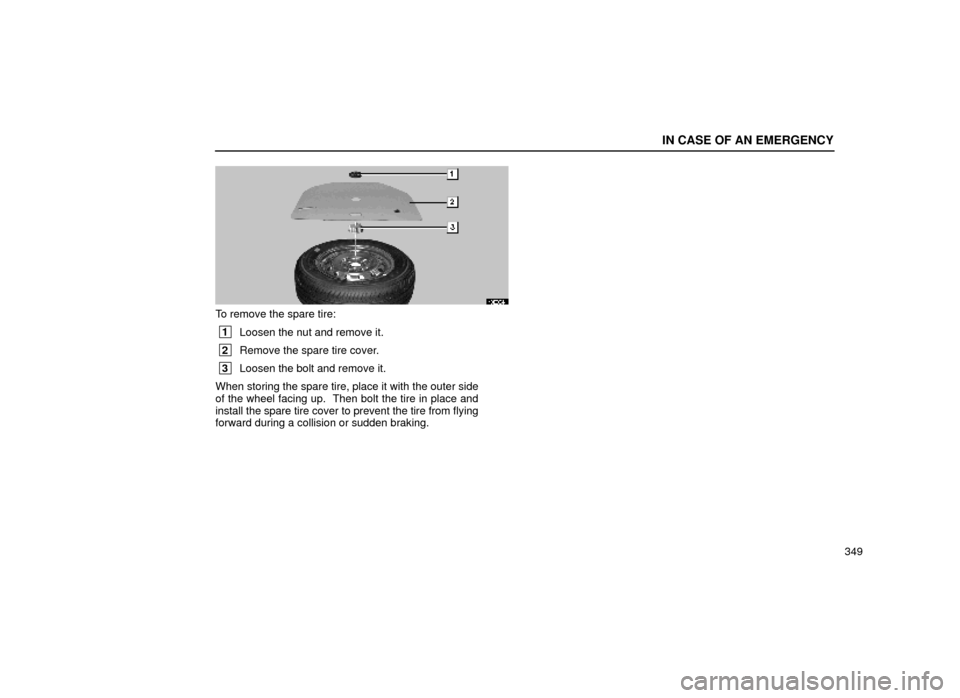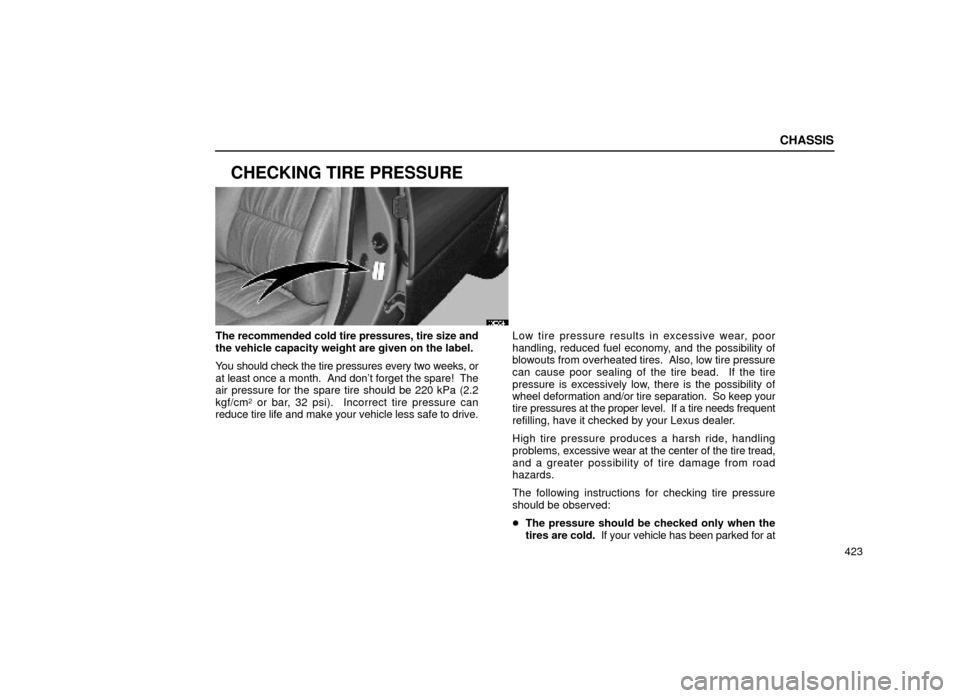IN CASE OF AN EMERGENCY
349
40E004±1
To remove the spare tire:
1Loosen the nut and remove it.
2Remove the spare tire cover.
3Loosen the bolt and remove it.
When storing the spare tire, place it with the outer side
of the wheel facing up. Then bolt the tire in place and
install the spare tire cover to prevent the tire from flying
forward during a collision or sudden braking.
CHASSIS
415
± TIRES AND WHEELS
Tire size
Recommended cold tire inflation pressure Vehicle load up to 4 occupants
Vehicle loaded up to vehicle capacity weight
Spare tire
Trailer towing (conventional and snow tires)
Wheel size
Wheel nut torque
Type A: P205/65R15 92V
Type B: P205/60R16 91V
180 kPa (1.8 kgf/cm
2 or bar, 26 psi) (Both front and
rear)
220 kPa (2.2 kgf/cm
2 or bar, 32 psi) (Both front and
rear)
220 kPa (2.2 kgf/cm
2 or bar, 32 psi)
220 kPa (2.2 kgf/cm2 or bar, 32 psi) (Both front and
rear)
Type A: 15 � 6 JJ
Type B: 16 � 6 JJ
103 N´m (10.5 kgf´m, 76 ft´lbf.)
NOTE: For a complete information on tires (e.g. replacing tires or replacing \
wheels), see ªChecking tire pressureº
through ªAluminum wheel precautionsº on page 423 through 432.
CHASSIS
423
CHECKING TIRE PRESSURE
63E004±1
The recommended cold tire pressures, tire size and
the vehicle capacity weight are given on the label.
You should check the tire pressures every two weeks, or
at least once a month. And don't forget the spare! The
air pressure for the spare tire should be 220 kPa (2.2
kgf/cm
2 or bar, 32 psi). Incorrect tire pressure can
reduce tire life and make your vehicle less safe to drive. Low tire pressure results in excessive wear, poor
handling, reduced fuel economy, and the possibility of
blowouts from overheated tires. Also, low tire pressure
can cause poor sealing of the tire bead. If the tire
pressure is excessively low, there is the possibility of
wheel deformation and/or tire
separation. So keep your
tire pressures at the pr oper level. If a tire needs frequent
refilling, have it checked by your Lexus dealer.
High tire pressure produces a harsh ride, handling
problems, excessive wear at the center of the tire tread,
and a greater possibility of tire damage from road
hazards.
The following instructions for checking tire pressure
should be observed:
� The pressure should be checked only when the
tires are cold. If your vehicle has been parked for at


